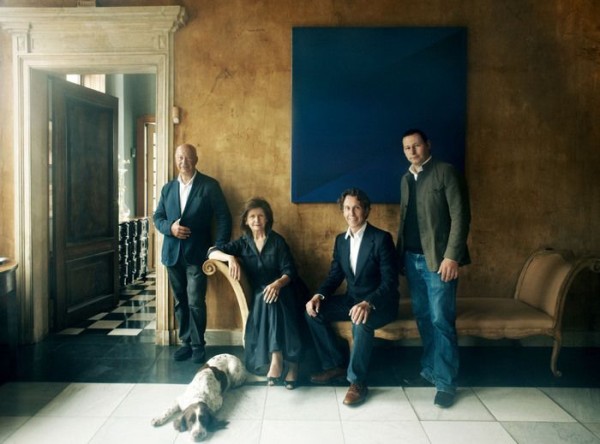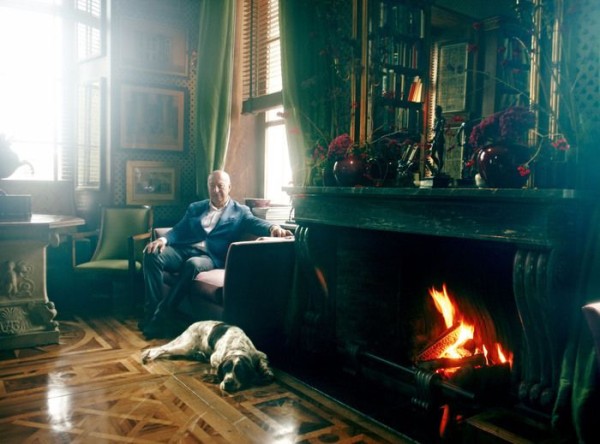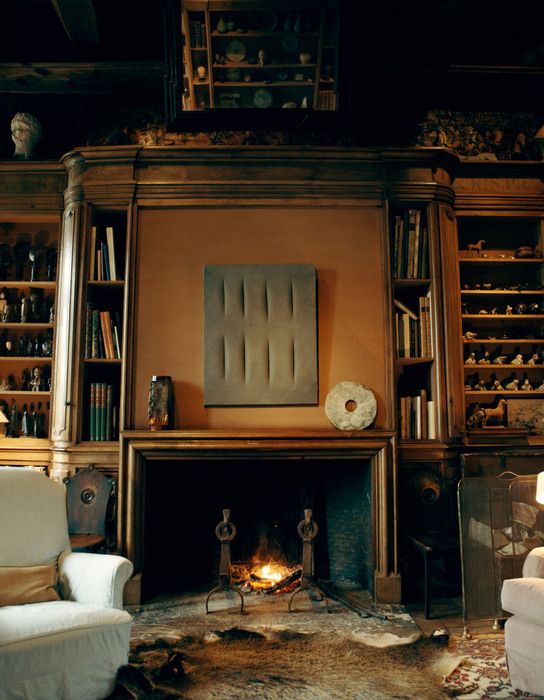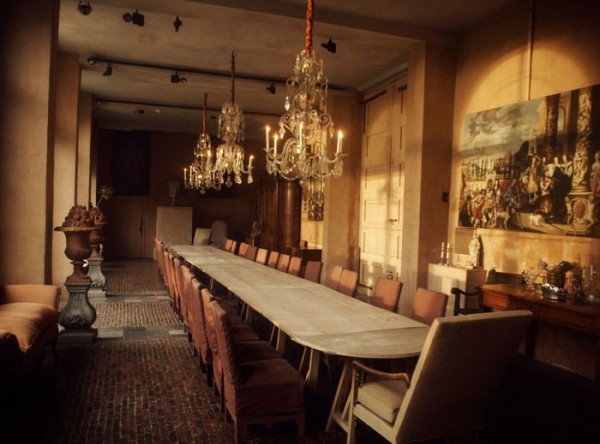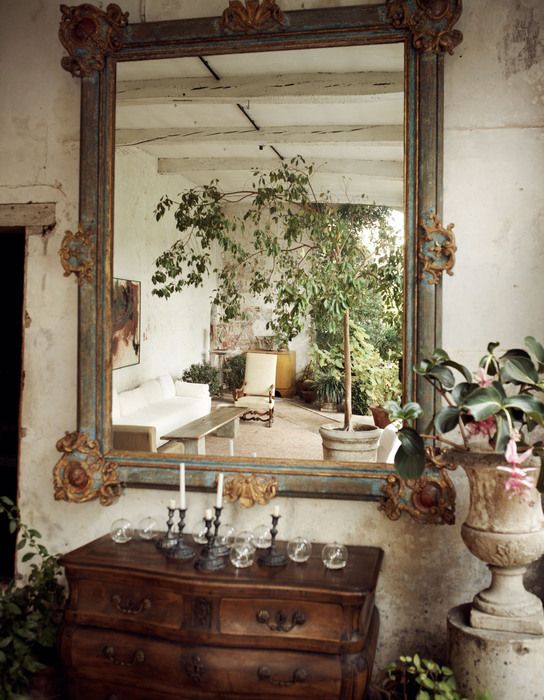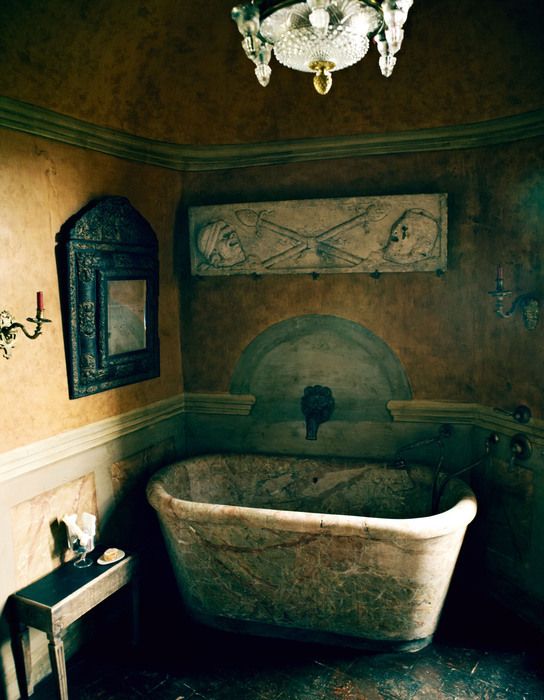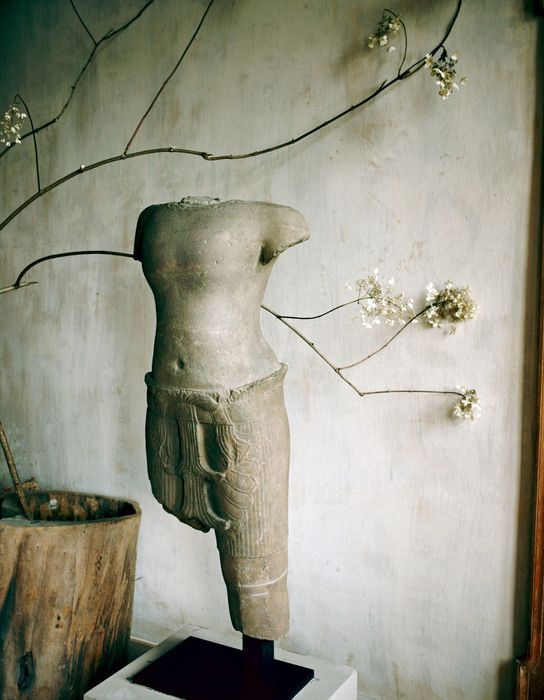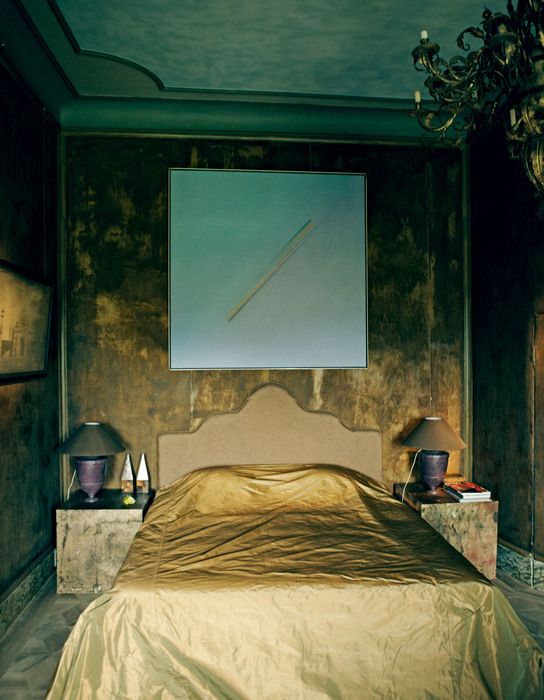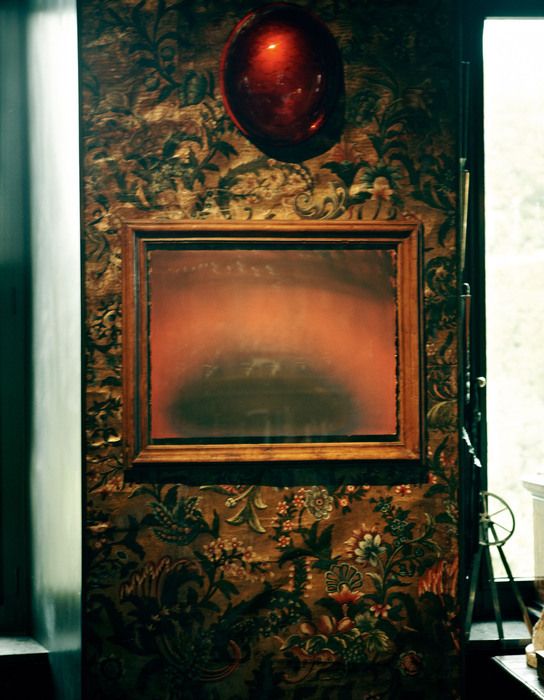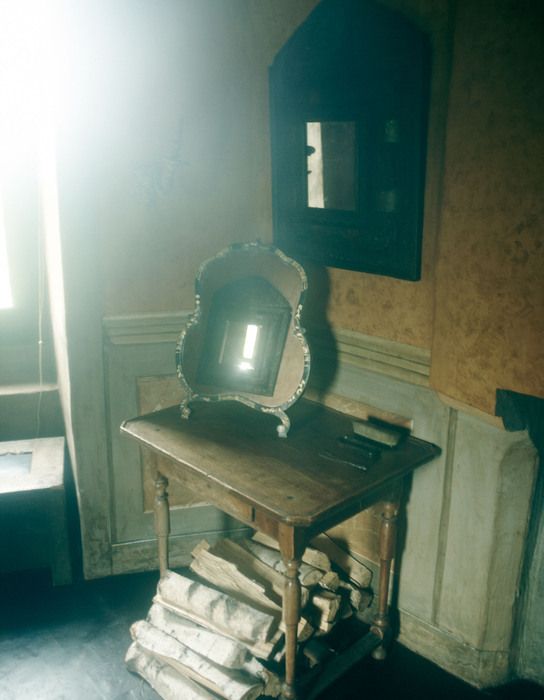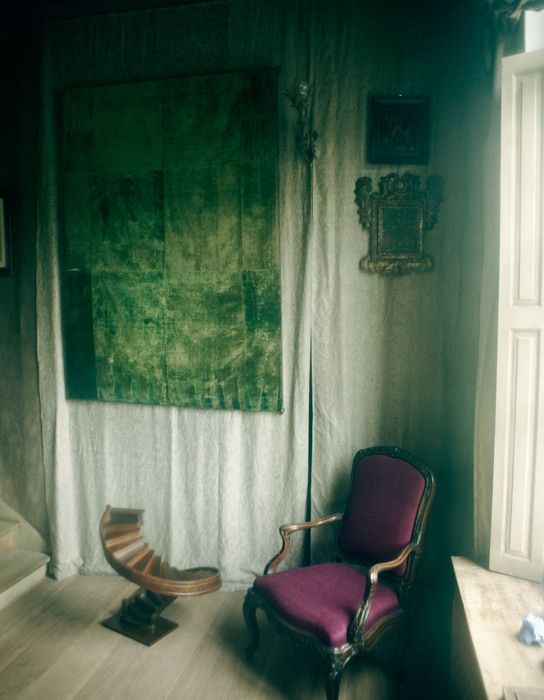Since winter I have had a copy of the British Elle Decoration annual publication “Country” setting handily nearby with the intention of sharing a feature on the residence of May and Axel Vervoordt outside Antwerp, Belgium. However, soon it was buried beneath a pile of other intriguing publications, many of which are still on “the back burner”. Fast forward to last week, I happened upon an article in the “How To Spend It” section of The Financial Times on Axel Vervoordt’s continued curatorial participation at Palazzo Fortuny for the Venice Biennale, which included a tour of his Antwerp residence, ’s-Gravenwezel. I saved the FT article and dug out the “Country” issue of Elle Decoration, and herewith begins Part I …
First, you may be wondering why I care to write a post on the home of a designer that has been oft photographed and featured in magazines and blogs to the point that both are synonymous with Belgian style. All one has to do is look to Restoration Hardware to observe how Vervoordt’s elemental aesthetic has trickled down to the masses. Yet for me, as with many, his style is both homely and sophisticated, even provocative, and I never tire of revisiting his rooms. As with the remarkable homes of other artists and designers, such as Cy Twombly and Stephen Sills, there is an experimental quality – home as design laboratory – that elicits our own curious nature when viewing his spaces. He manages to traverse a wide range of styles and periods from ancient to modern with subtle grace, creating interiors that are at once comfortable and creatively stimulating. The root of his modus operandi is art and the spirit contained within.
Living with art is, for me, essential. It’s quite possible for the most conventional, “milk toast” room to become enlivened by an informed selection of art. With an artist’s eye, Vervoordt can visualize the stained patterns on the round top of an antique wine table as a representation of Eastern philosophy, hung like sculpture over a chest. Nearly every view, every framed vignette, of a Vervoordt room is reminiscent of an Old Master’s painting, a setting within a ryokan (a Japanese country house), or a modern art installation. Every element is selected with heart and discretion to support the overall atmosphere envisioned. As Vervoordt commented to Emma Chricton-Miller for The Financial Times, “In our busy lives it is very important to be surrounded by art. It gives you extra vision; it gives you interior peace and serenity. Our collection is all about that, it is timeless, and it represents the search for universality.” To follow are photos capturing the spirit and elusive quality of The Art of the Room, chez Vervoordt.
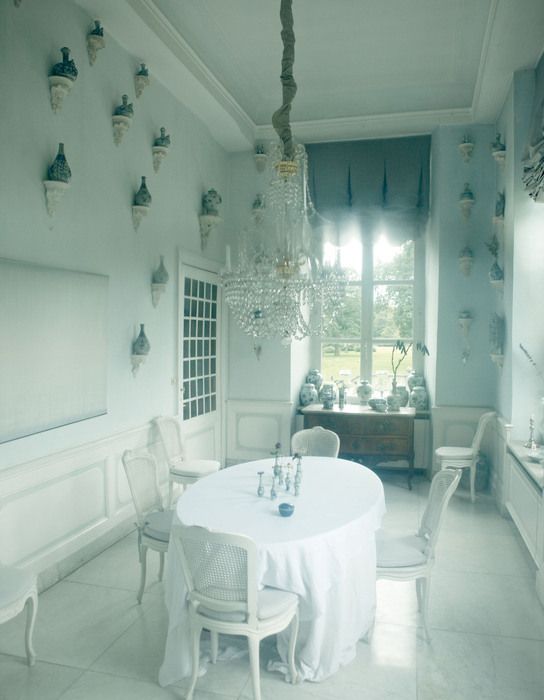
Chinese Ming porcelain salvaged from a wreck by Michael Hatcher adorns the fanciful Baroque dining room.
Photography by Maurice Haas for the “How to Spend It” Interiors section of The Financial Times.











